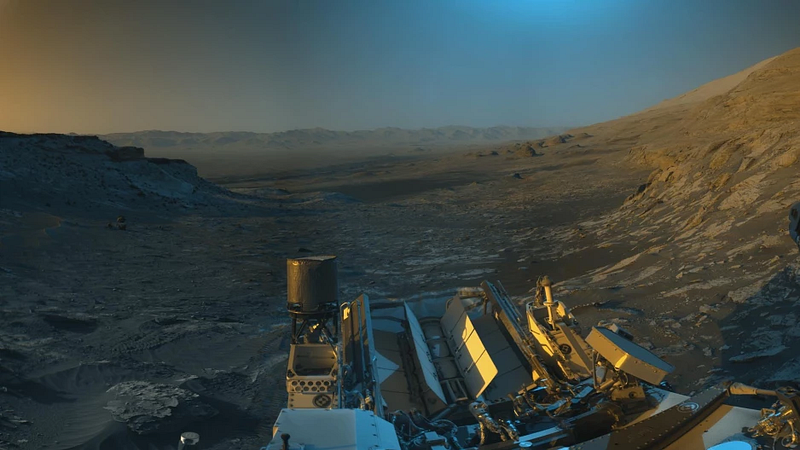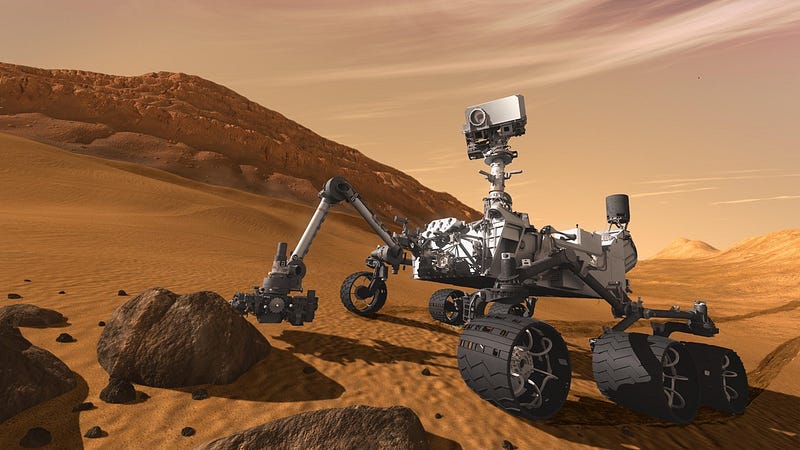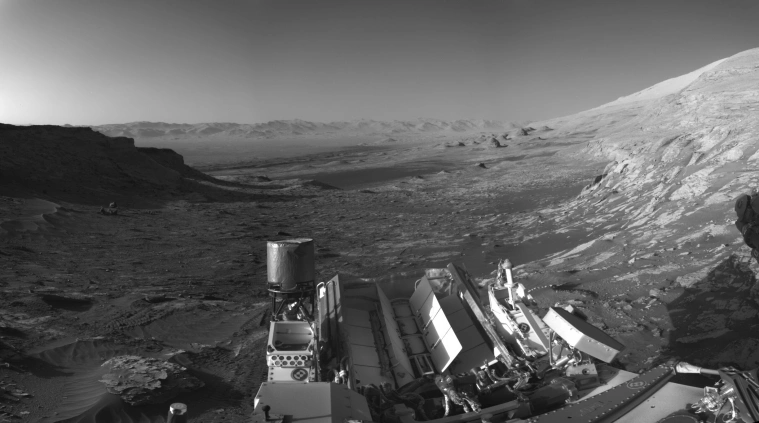A Stunning Postcard from Mars: NASA's Colorized Photos
Written on
Chapter 1: Overview of Curiosity's Mission
Since its arrival on Mars in 2012, the Curiosity rover has been on an extraordinary journey, capturing the Martian landscape with its panoramic camera. This camera provides a 360-degree view, allowing mission control to assess the rover's surroundings effectively. Initially, the images sent back to Earth were in black and white and of lower resolution, but recently, the team requested higher-quality photographs due to the captivating beauty of the Martian scenery.

On November 16, in response to the stunning views, scientists instructed Curiosity to take two separate images at different times of the Martian day—one in the morning and another in the afternoon. This resulted in a breathtaking final photograph that beautifully captures the landscape.

Section 1.1: The Art of Colorization
While Curiosity primarily uses a black-and-white camera, the mission team decided to add color to the images. This artistic endeavor produced stunning results, as the colors were chosen based on the time of day the photos were taken. Morning light is represented in blue, afternoon light in orange, and a blend of both is depicted in green. However, these colors do not represent what a human would actually see on Mars due to atmospheric dust filtering the light, which would make the landscape appear predominantly red.
Subsection 1.1.1: Original Images Comparison
The original photographs that contributed to the postcard can be viewed below.


Section 1.2: Mount Sharp Exploration
The center of the newly created postcard highlights the slope of Mount Sharp, which stretches five kilometers long and has been under exploration by Curiosity since 2014. This mountain is situated within the Gale crater, formed by a meteorite impact and measuring over 150 kilometers in diameter. Its towering rim reaches 2,300 meters, making it visible from a considerable distance.
Chapter 2: Discoveries of Curiosity and Perseverance
Curiosity's mission is crucial for enhancing our understanding of Mars's climate and geology, while also searching for signs of past life. The rover's findings, including evidence of ancient water and organic compounds, have reshaped our knowledge of the planet. Initially expected to last just two years, Curiosity's mission continues, especially with Perseverance, its successor, now operating on Mars, equipped with advanced tools for studying Martian minerals and exploring the Jezero crater.
Explore the breathtaking visuals of Mars in "Mars From Space Like You've Never Seen Before in 4K!" showcasing stunning real images of the Red Planet.
Delve into the fascinating topic of brown dwarfs in "Dark Star: The Invisible Universe of Brown Dwarfs," revealing the mysteries of these intriguing celestial bodies.
For more incredible images captured by the Curiosity rover, visit NASA's official website.